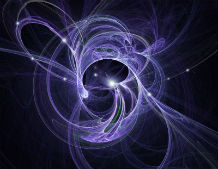Ripples from the Big Bang
Jo Dunkley

- Wednesday 8 June 2016, 7.00PM to 8:30pm
- Free admission
Booking required
Book tickets - Memorial Hall, St Peter's School, Clifton (map)
- Wheelchair accessible
Event details

By looking far out into space, we can see back almost to the dawn of time. Faint microwave light is reaching us now that set off on its journey almost 14 billion years ago. It carries a picture of what the Universe looked like back then, and helps us find out how galaxies like our own Milky Way came to be here billions of years later. It also helps us discover what was happening at the Big Bang itself.
Jo Dunkley of the University of Oxford explains how space satellites and telescopes at the South Pole and in Chile are helping us to study this light. Find out what we are learning about the beginning of the Universe.
About the speaker
Jo Dunkley is a Professor of Astrophysics at the University of Oxford and a Fellow at Exeter College. Her research is in cosmology, studying the origins and evolution of the Universe. She has been awarded the Maxwell Medal, the Fowler Prize and the Philip Leverhulme Prize for her work on the Cosmic Microwave Background.
You may also like...
This event is part of the Science: The Final Frontier festival theme. Also in this theme:

